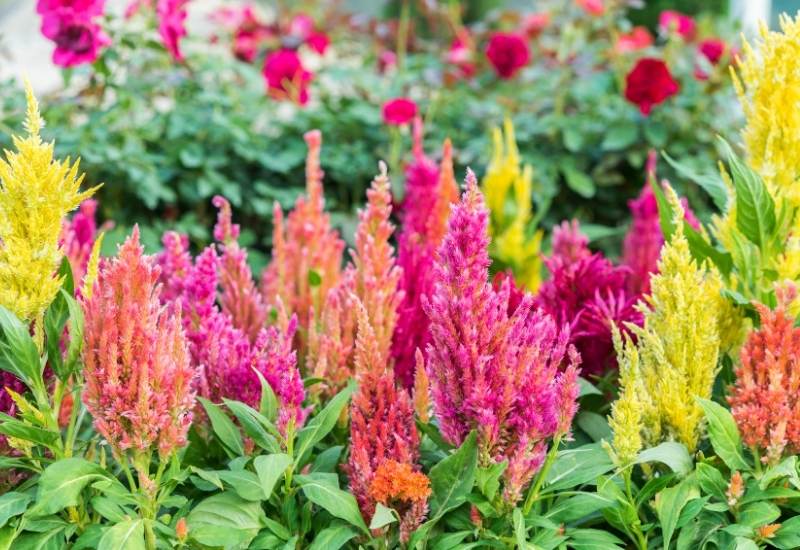
Celosia or cockscomb is a genus of annual flowering plants from warm countries around Central and South America, Africa, the West Indies, and South and East Asia.
The name comes from the Greek for “burning” because the brightly colored inflorescences of celosia look like flames. They are well known as garden plants but also as edible plants, being members of the Amaranthaceae family (the “amaranth family”).
The genus Celosia comprises 60 different species. Not all, however, are suitable for cultivation and especially for gardening.
There are, however, nine popular types that gardeners have grown for a long time. Each is distinctive, and each has its gardening merits, like the famous Celosia spicata, Celosia cristata, and Celosia plumosa.
While each variety has similar growing requirements, but they have huge differences in aesthetic and gardening value.
Taller varieties are often grown as cut flowers, while some dwarf varieties, such as ‘Amigo’ is most popular for growing in containers as houseplants.
With so many stunning colors and shapes to choose from, knowing a little something about different types of celosia flowers can ensure you have beautiful blooms from early summer until the first frost.
Celosia Plant Description
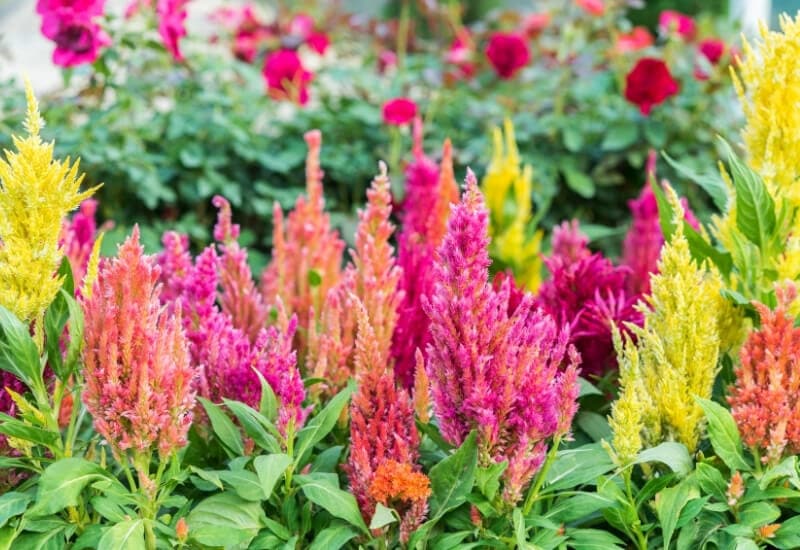
Celosia plants are easy to recognize: they have those brightly colored plumes that stick out from the center of the foliage.
These plumes are in fact impressive inflorescences that can last for moths on the plants. The leaves are green and broad and pointed, lanceolate in shape.
They have clear veins that start from the central rib and move to the sides of the leaf. The foliage can be green, even bright green, but at times and in some species, it can have purple veins or be fully purple.
The plant forms a fairly small shrub with an upright habit terminating in the “plume” while the leaves tend to have an arching but horizontal position below it.
Best Steps For Growing Celosia Flower
Here are all the details you need to know about this plant.
And now you know what all 9 varieties have in common, let’s see how they different!
10 Types Of Celosia Flowers To Add Flair to Your Garden
Of all the species of celosia, most are small herbaceous plants with little gardening value. But some are so striking that they can brighten up even the dullest green space or terrace.
And here are the top 10 celosia flower varieties to add a splash of colors to your garden bed, borders and containers.
1. Celosia Plumosa
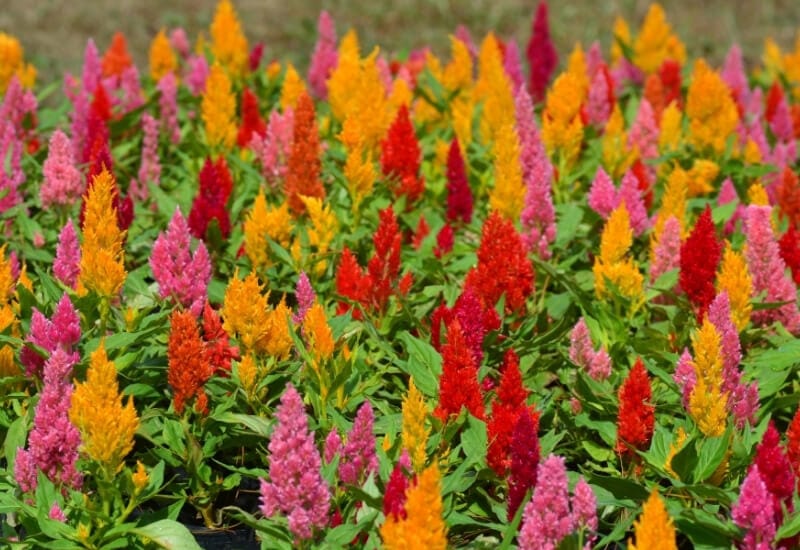
“Plumed celosia” or Celosia plumosa is one of the most popular types of this plant with gardeners. It has very large and thick plumes of very brightly colored inflorescences.
These look like feathers, or feather dusters if you wish. The colors are so bright that they may look unnatural to some people.
The leaves are usually bright green, which makes for a good contrast with the plumes. It is very strong and almost pest free, which is why it is very common in open gardens, especially in cold regions.
It is actually a tender perennial unlike other Celosia species, which will survive in hot countries, while in colder climates it is grown as an annual.
2. Crested Coxcomb (Plumosa Cristata)
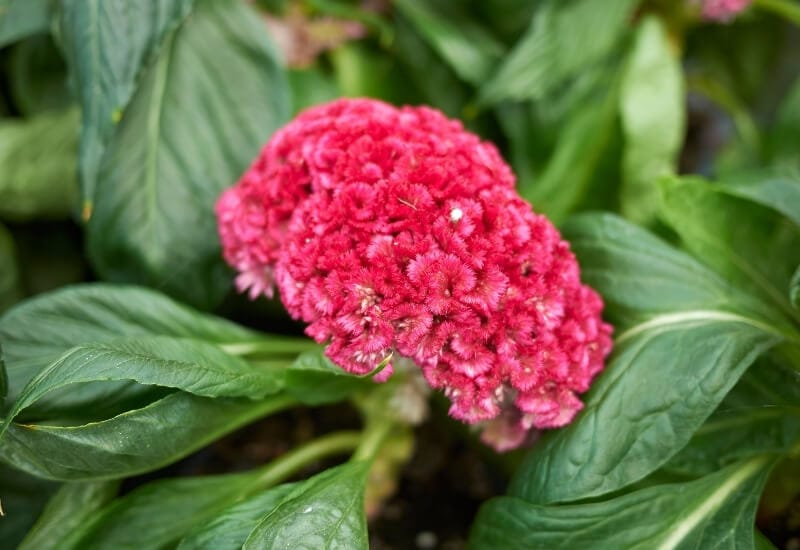
Crested coxcomb is a special variety of Celosia because it looks like the crown of a hen or rooster in a way. The term “cristata” means “crested” in fact, and that is what the inflorescence looks like.
To some, it may remind them of a folded velvet cloth. For this reason, its stands apart from all other species of this genus.
The leaves are actually thin, not broad like in Celosia plumosa, and they appear like a “feather frame” to the central feature of this exotic looking plant, the crest in fact.
It is a highly decorative and sculptural variety, suitable for most types of gardens, including urban and modern ones.
3. Wheat Celosia (Celosia Spicata)
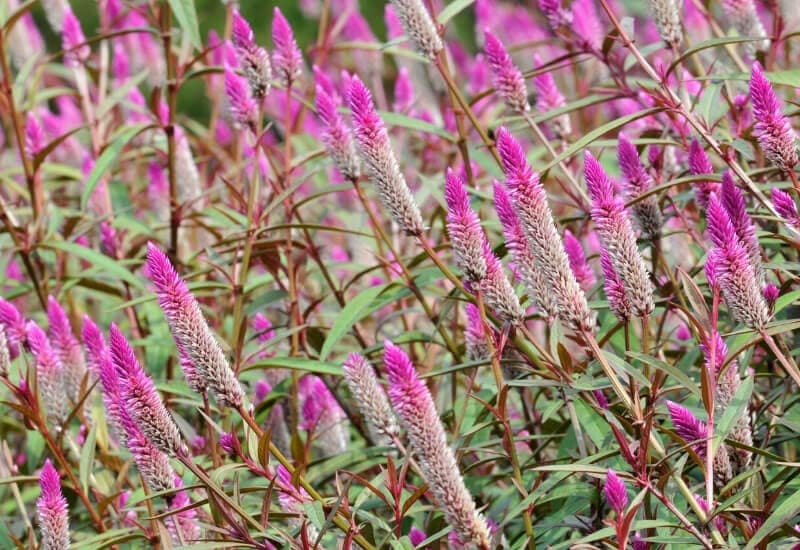
Wheat celosia is another very popular variety of this plant. Unlike Celosia Plumosa, the plumes are not composite but simple.
Each looks like the tail of a fox, cylindrical to conical in shape and made up of many little feathers that point out and up from the center.
They are very thick indeed, giving you a “fluffy” appearance. The name means “spiked” because they look a bit like wheat spikes…
The leaves are usually green, though of different shades. They are not very thick as foliage, and they look like they are scattered in the branches.
On the other hand, the plumes are often bright magenta or of two colors. It is also one of the tallest varieties of coxcomb plant. This is an ideal plant to mix in with others in an informal border or flowerbed.
4. Silver’s Cockscomb (Celosia Argentea)
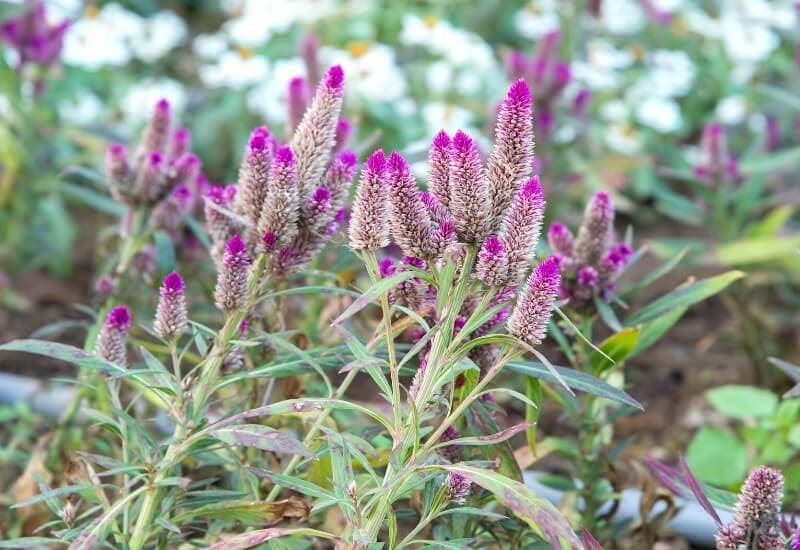
Silver’s cockscomb (or Celosia argentea) is a classical looking variety of celosia with elegant and bright plumes and an exotic tone.
It is a medium size plant with bright green leaves and plumes that look like they have been painted with artificial colors…
It is excellent for a tropical looking and bold garden. It propagates fast and spontaneously in warm countries, and it can even naturalize. In fact, in some areas of Asia, it has now become an invasive (though beautiful) weed!
The fact that the flowers are hermaphrodites (both male and female) makes its propagation very easy and successful.
In fact it is a favorite variety by garden centers and nurseries. You will not have trouble finding this type of celosia in stores or online.
5. Celosia Floribunda
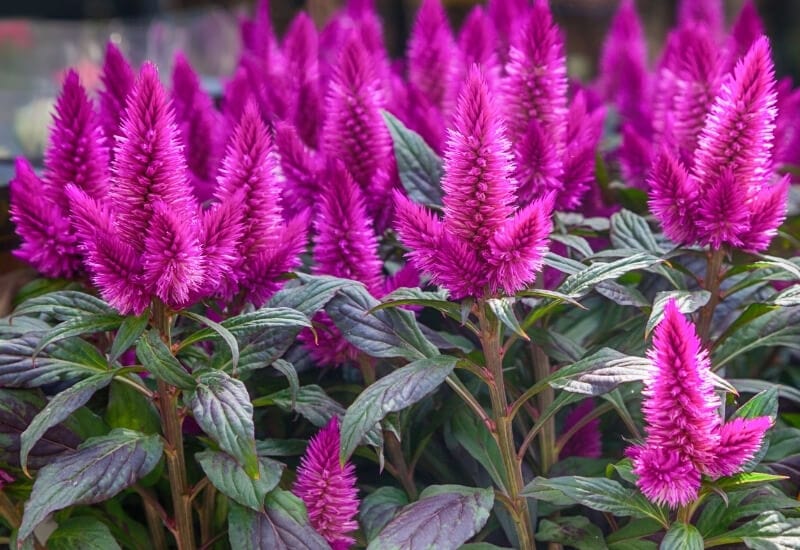
Celosia floribunda is a very unusual type of celosia… It is a fairly large shrub, in fact, and the plumes are not thick and colorful, nor feathery.
They look more like tentacles with green to brown little seeds on them, depending on the stage of maturity. These are actually small flowers though.
Unlike other celosias, this variety has a wold but not particularly exotic look. Its habit as a shrub is on the whole round.
While the leaves are pretty, if you want it in your hedges, borders or wind breaks, the great show it puts on is with the green plumes. They are so abundant that they cover the whole bush.
6. Death Grass Celosia (Celosia Isertii)
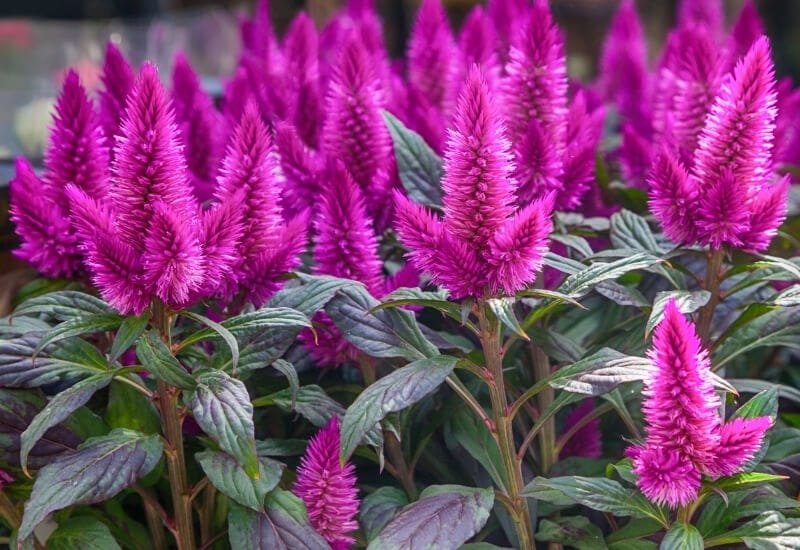
Death grass celosia is actually the name translated from the Mandingo term “mandinka furayanamo”… It is a small and less showy variety of celosia.
The plumes are pink to off white and elegant. They are delicate and romantic looking rather than exotic and striking.
It is used in cooking and it also has medicinal properties, however, it also has good decorative qualities. This too is a large variety of celosia, as it can reach 9 feet in height.
In fact, you can use it in combination with other plants in borders and hedges, especially if you want a “naturalistic” look.
7. Silver Spinach (Celosia Trigyna)
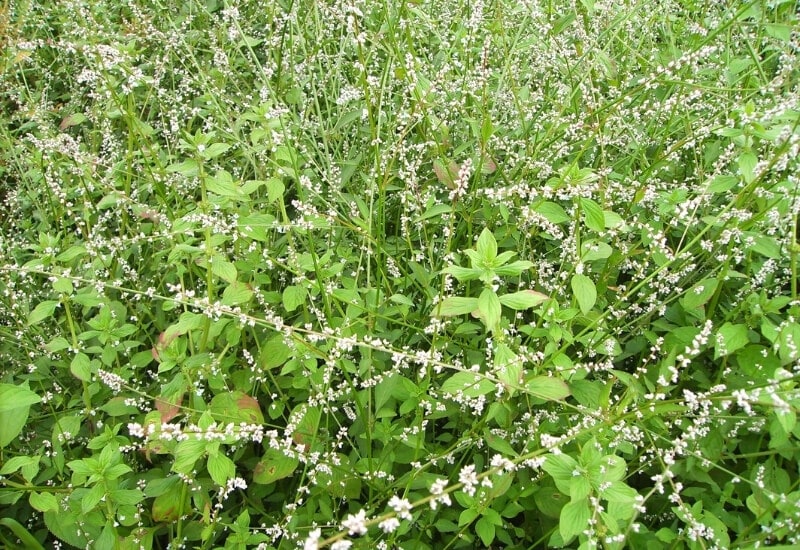
Silver spinach is another less popular and less showy variety of celosia, called Celosia trigyna by scientists. It has a “grassy” appearance, vaguely reminiscent of mint, or a thin leaved nettle.
The plumes are small, in fact they are more like spikes than plumes. The glowers are small but attractive. They are white with magenta dots.
This is not primarily a decorative variety. In fact it is mainly used as food, in soups and stews, but also to make sauces. But there is no reason why you should not turn your vegetable garden into a decorative one and vice versa.
Scattered in with other plants in a border or wild meadow, it can have a good visual impact if you want a wild, cottage garden kind of look.
8. PalmeriPalmer’s Cockscomb (Celosia )
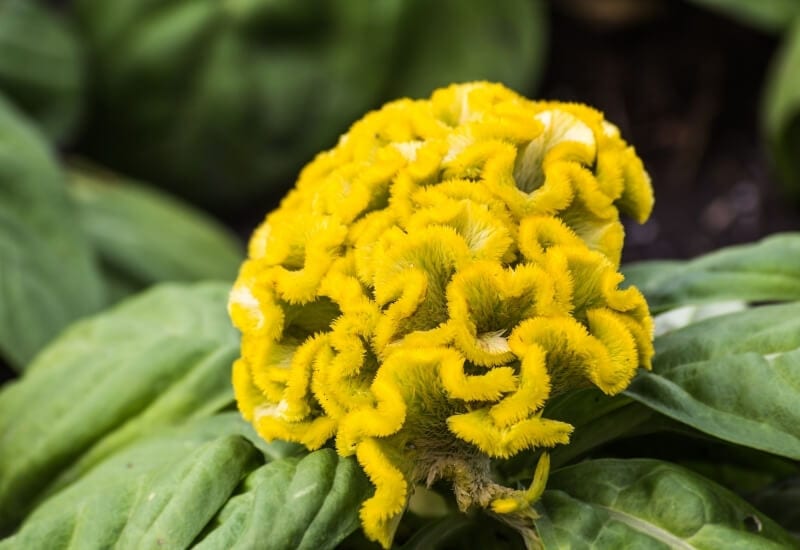
Palmer’s cockscomb is not a famous type pf celosia, but it does have great decorative value. The plumes are very, very showy, with a rich magenta purple shade that no visitor you your garden can miss.
They are also of a very regular shape, unlike other celosia plumes. In fact they are almost conical and they also appear at the end of visible stems.
The laves are broad and decorative and of a dark green color. This makes it a good plant for flower beds as well as borders in both formal and informal gardens…
And, by the way, this variety, native of the Lower Rio Grande Valley in Texas is a blooming champion… It can bloom repeatedly throughout the year, even in December and January in the right conditions.
9. West Indian Cockscomb (Celosia Nitida, A.K.A. Celosia Texana)
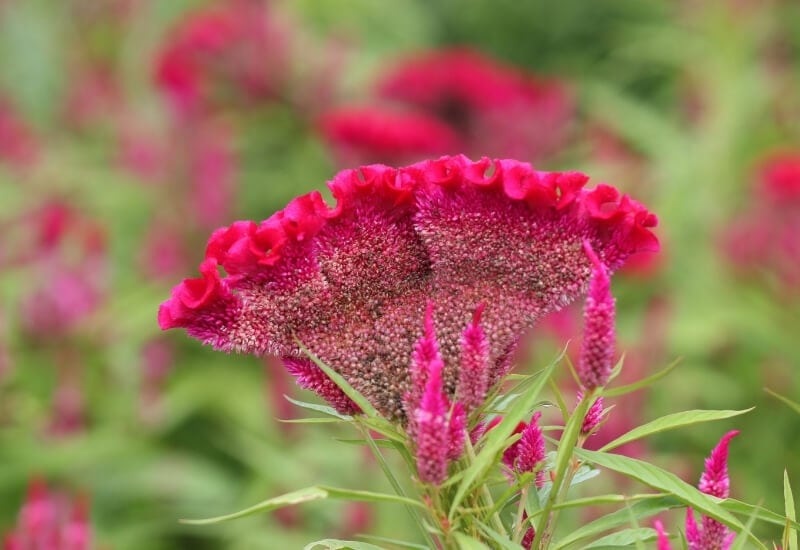
West Indian cockscomb is another shrub type of celosia. It has beautiful and thick, green and slightly hairy leaves. The overall effect of the foliage is herbaceous rather than exotic or sculptural.
It is not a very easy variety to find, but you can grow this perennial in hedges or tall borders as a filler. If you do, you will help its preservation because it is an endangered species.
The flowers come late in the season and they form small plumes with about two dozen white green and star shaped flowers. It is good for an informal, temperate looking garden.
10. Celosia Virgata
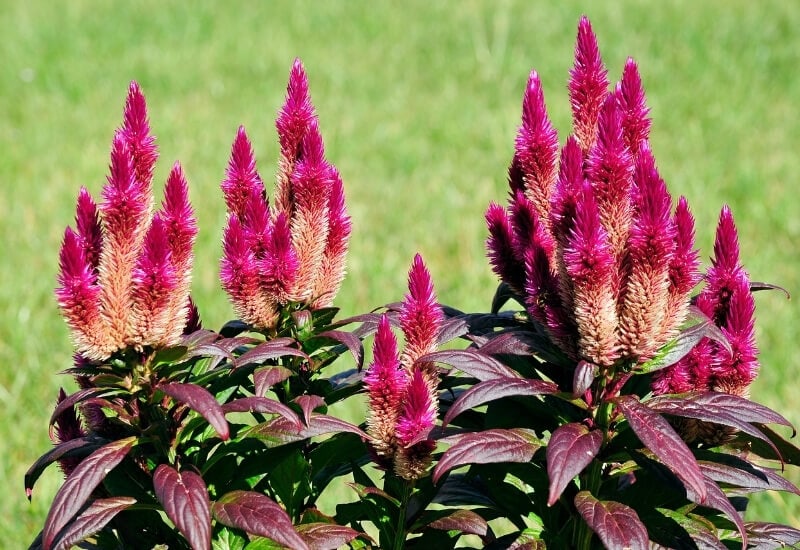
Celosia virgata originates from Puerto Rico and the Virgin Islands, and it is a perennial subshrub.
This means that it is a low shrub, suitable for wild looking borders mainly. The foliage is of a rich to dark green color, herbaceous and quite dense.
Each leaf is mainly elliptical in shape. The plumes are composed of a few dozed star shaped flowers of a greenish color with brownish red touches.
This is not a popular type of Celosia, but if you are enamored with this genus of plants and you want to collect them, this would be a good choice to complete your collection.
More Types of Celosia than You Thought…
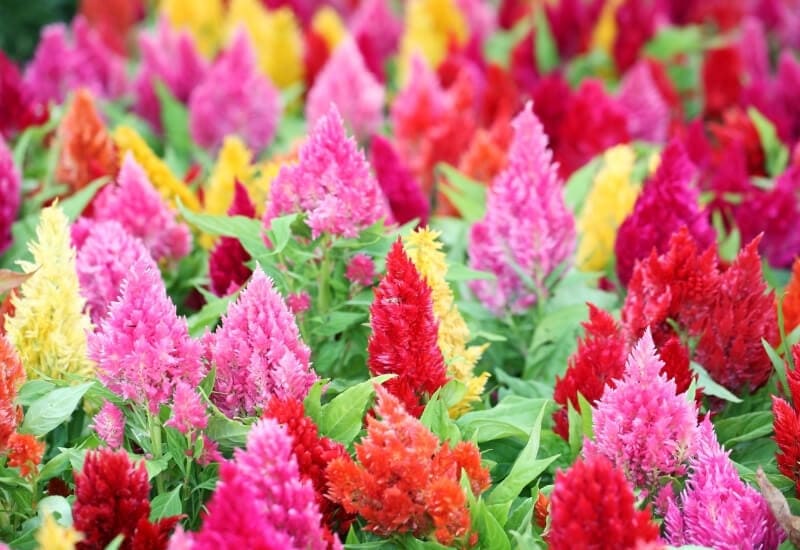
We all know celosia plants as the “super brightly colored plume plants”… True, many are like that… For example, plumosa, cristata and spicata are so vividly colored that they look like artificial plants…
But not all are small annuals, there are also big perennials that can reach tree size dimensions, like floribunda.
And then there are the “dinner table celosia plants” like silver spinach, which are not as attractive to the eye, but healthy and even medical for the whole body!

Written By
Adriano Bulla
After many years as an academic in London, Adriano Bulla became a writer, publishing books like A History of Gardening, Organic Gardening and Elements of Garden Design; he then decided to become a gardener, following his childhood dream, and has been following his dream writing and gardening professionally in Southern Europe, where he has specialized in new and innovative organic gardening fields and techniques, like permaculture, regenerative agriculture, food forests and hydroponics.
